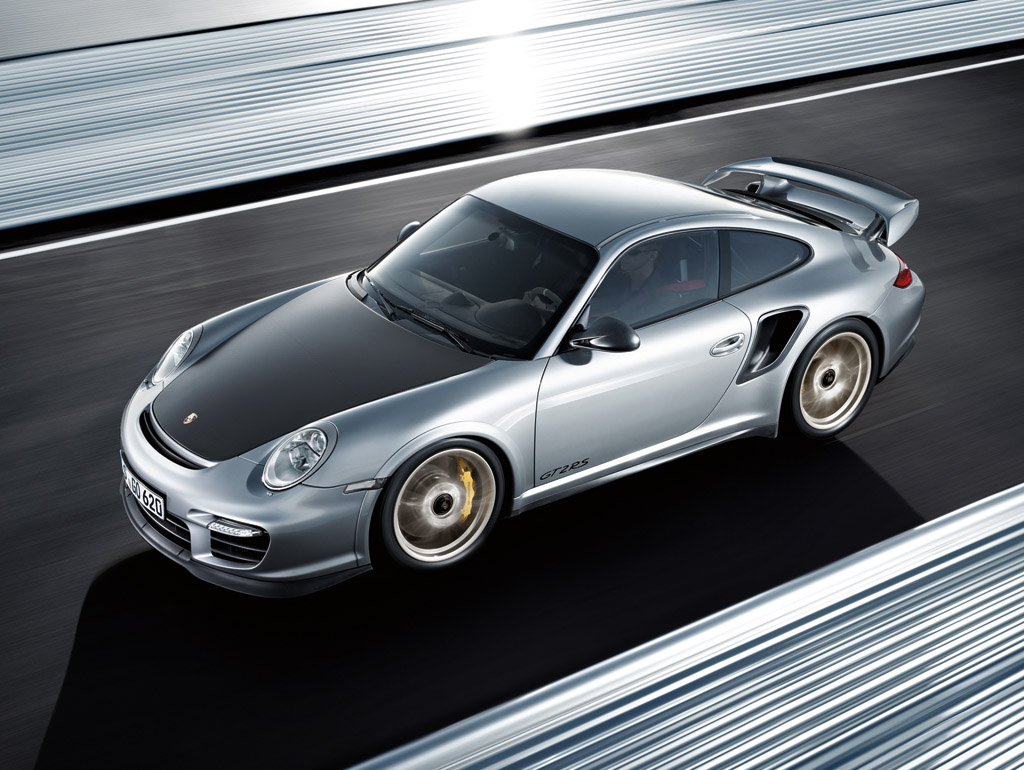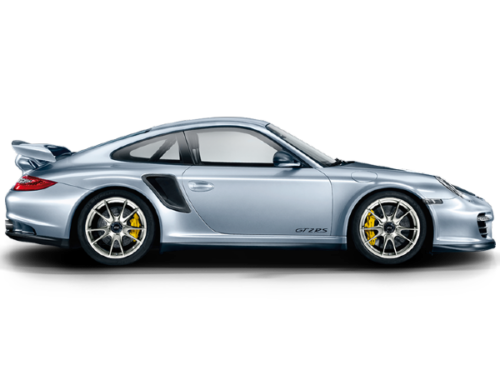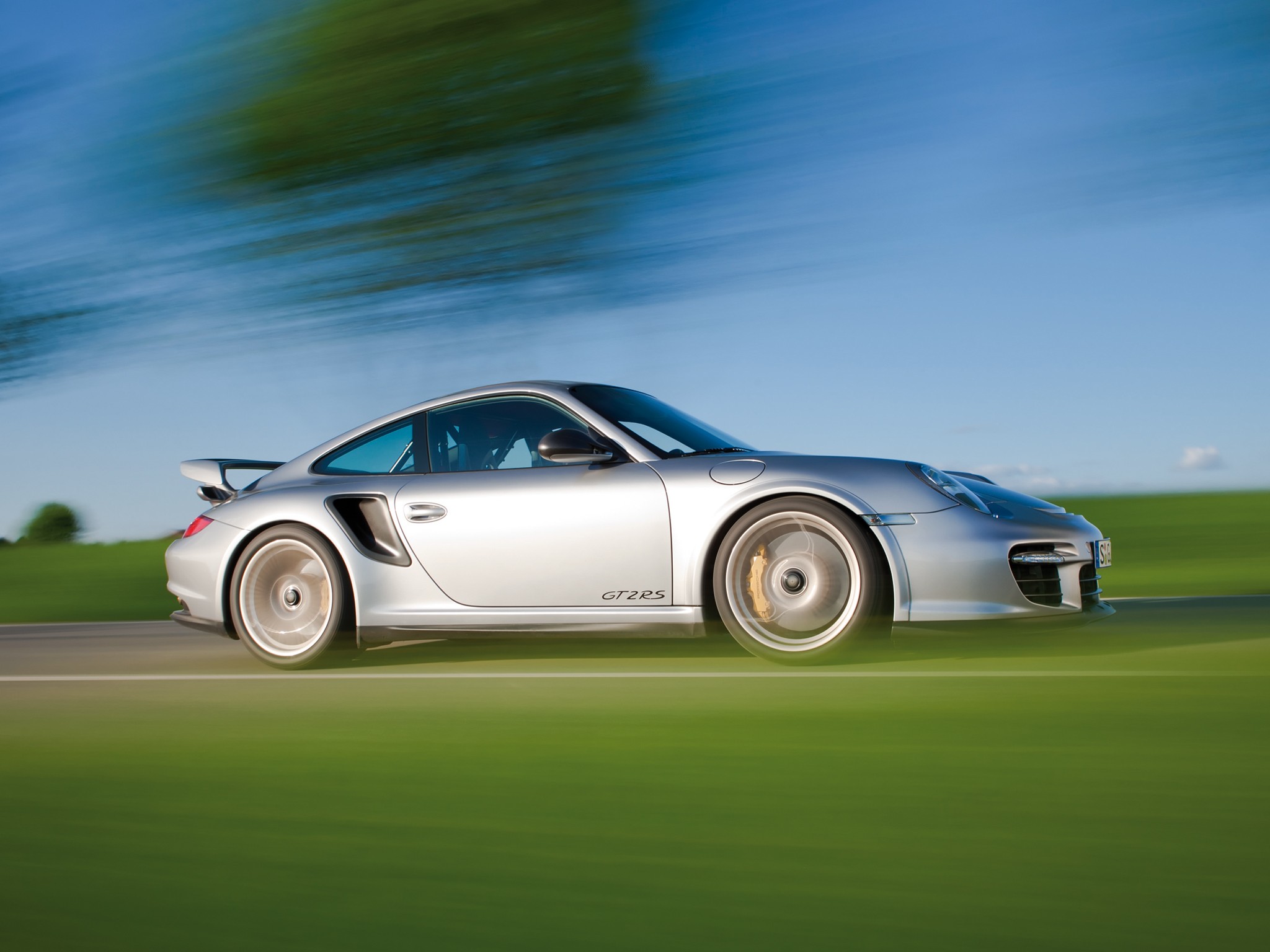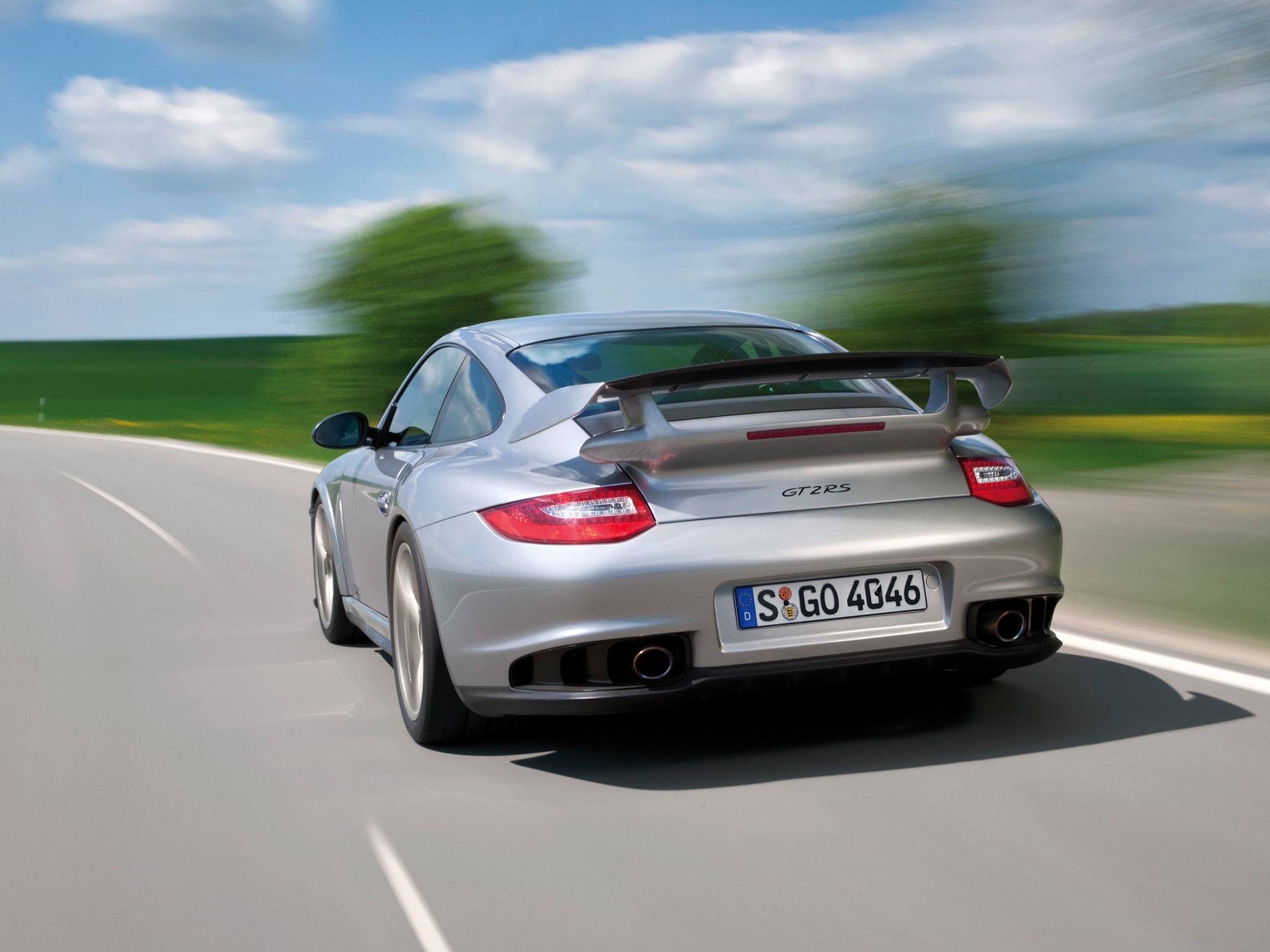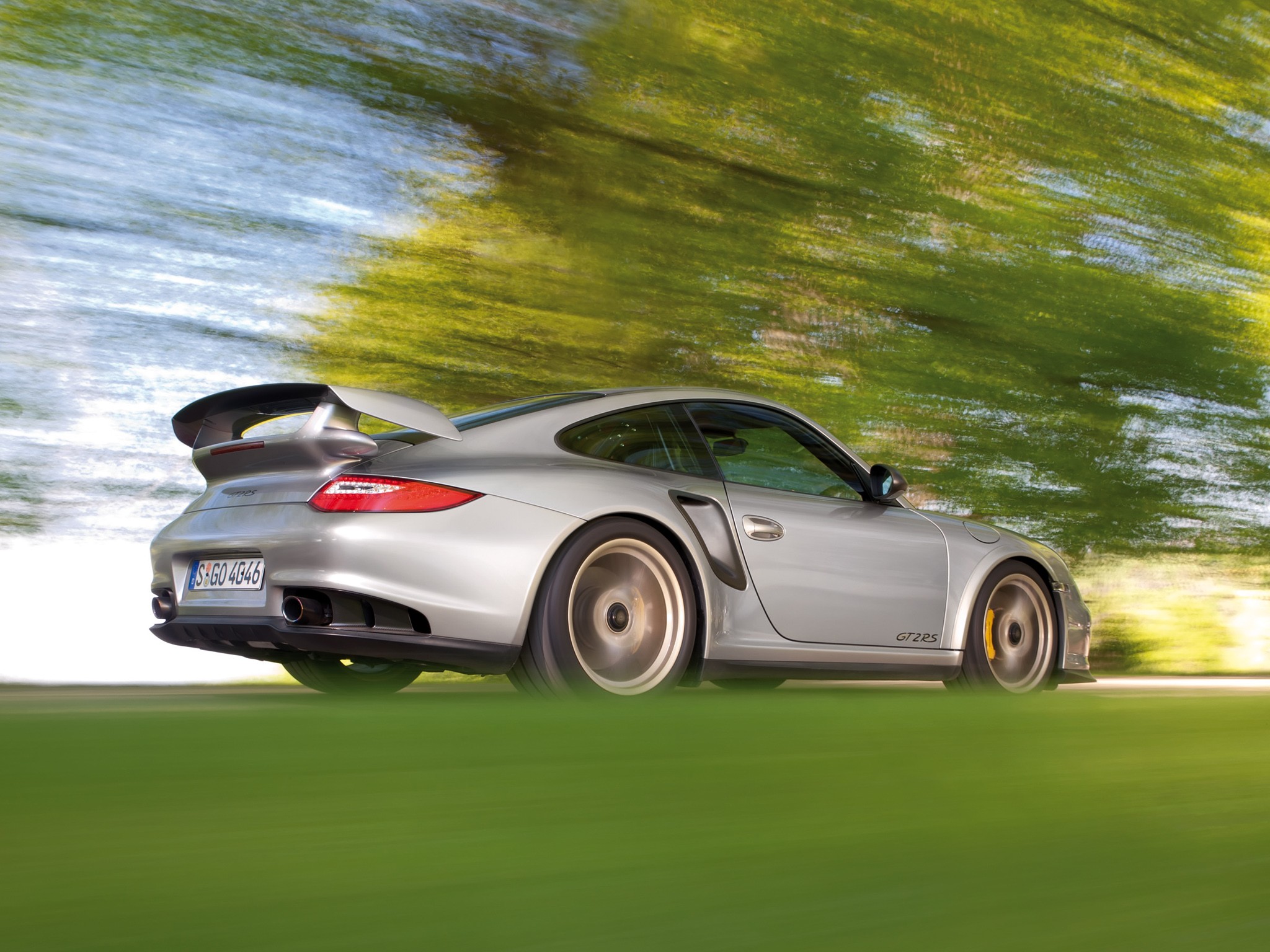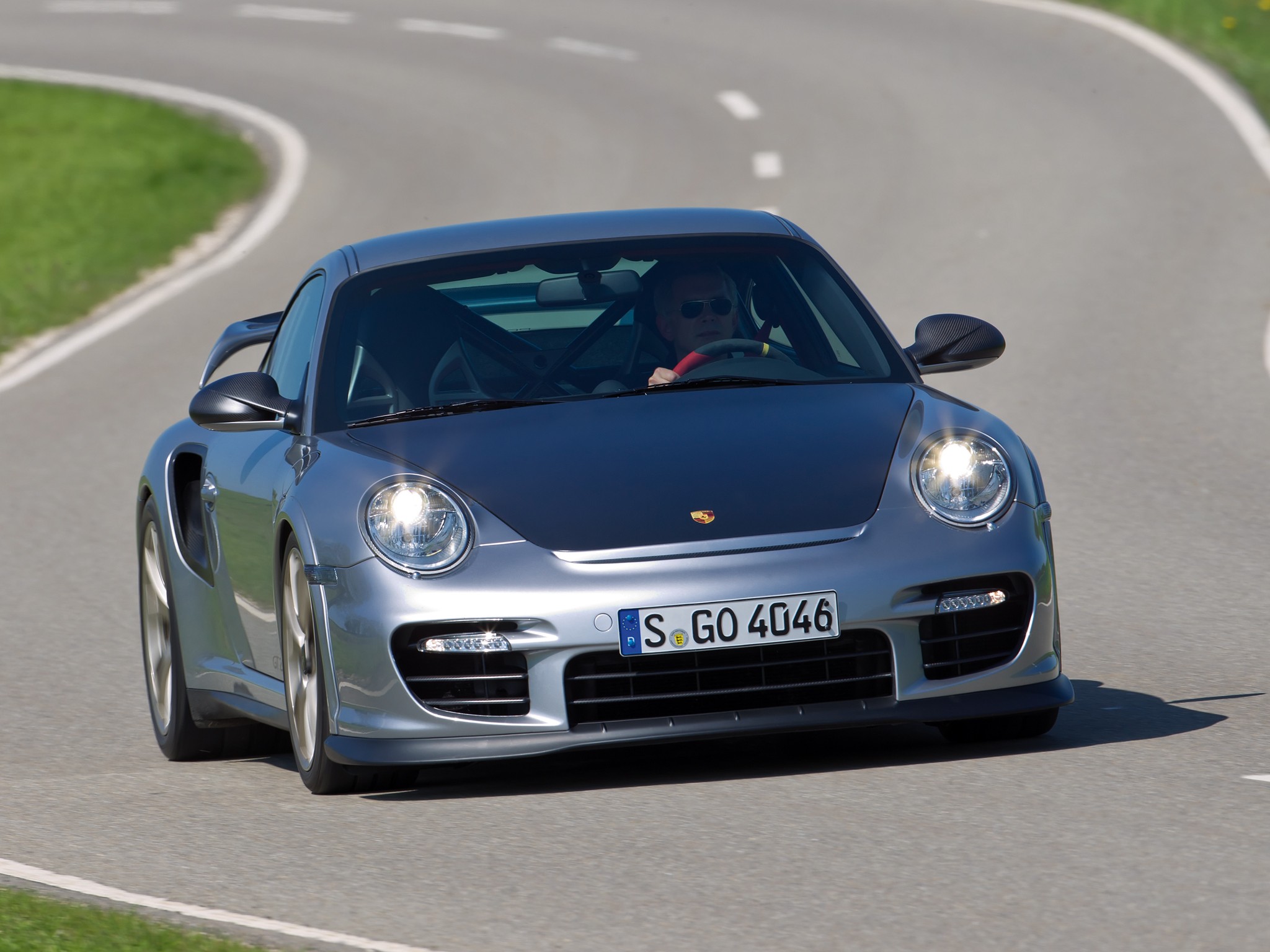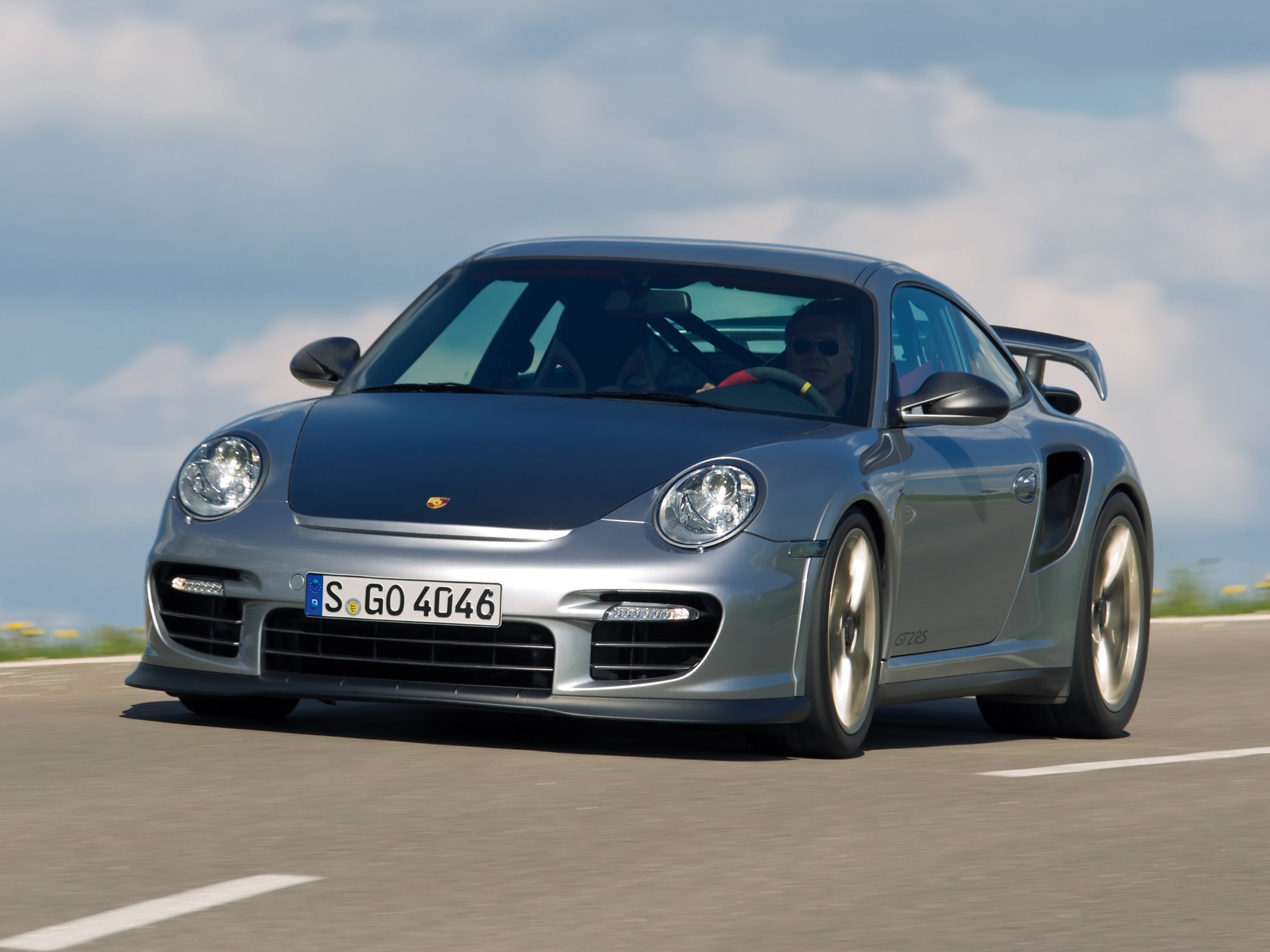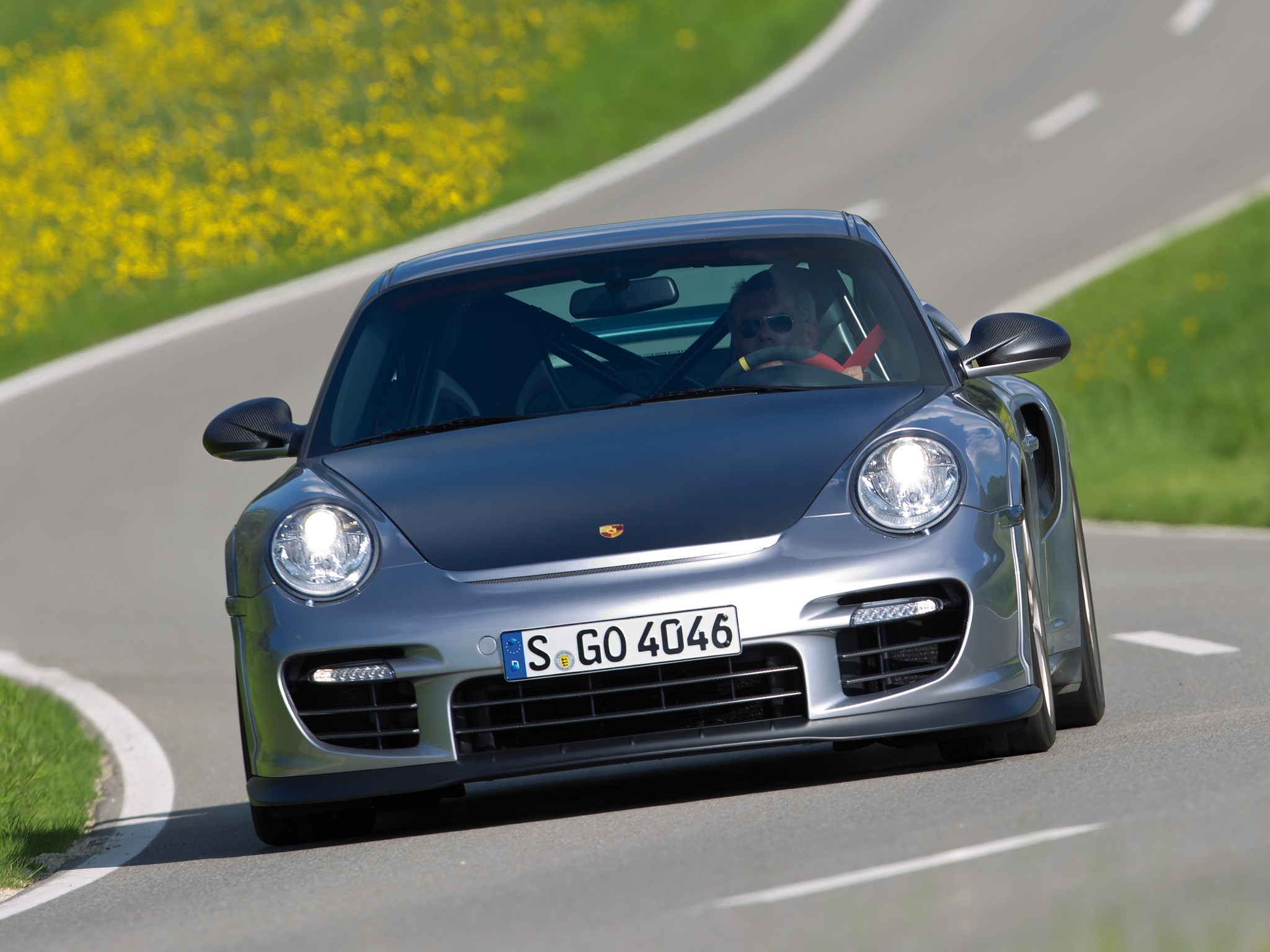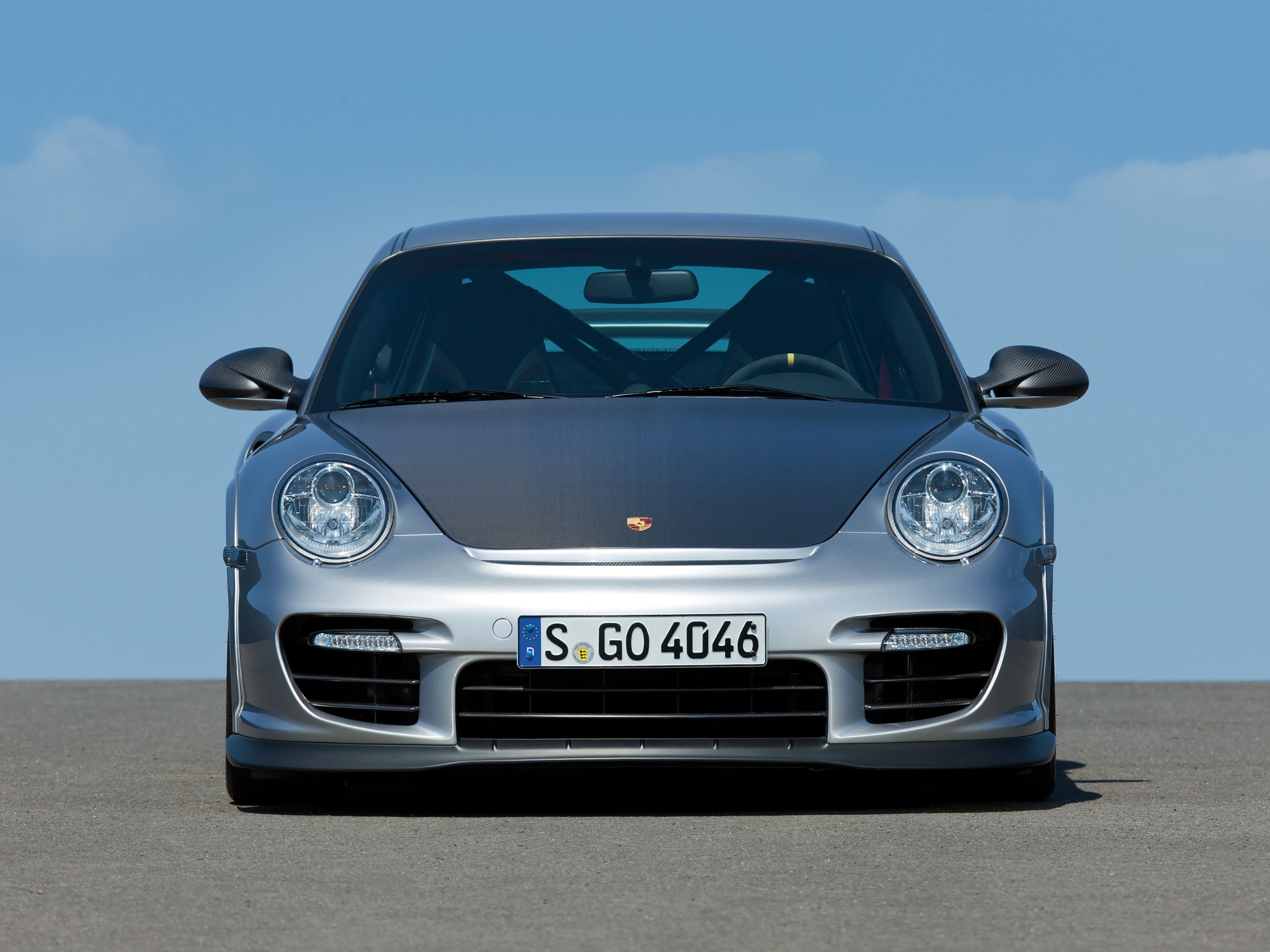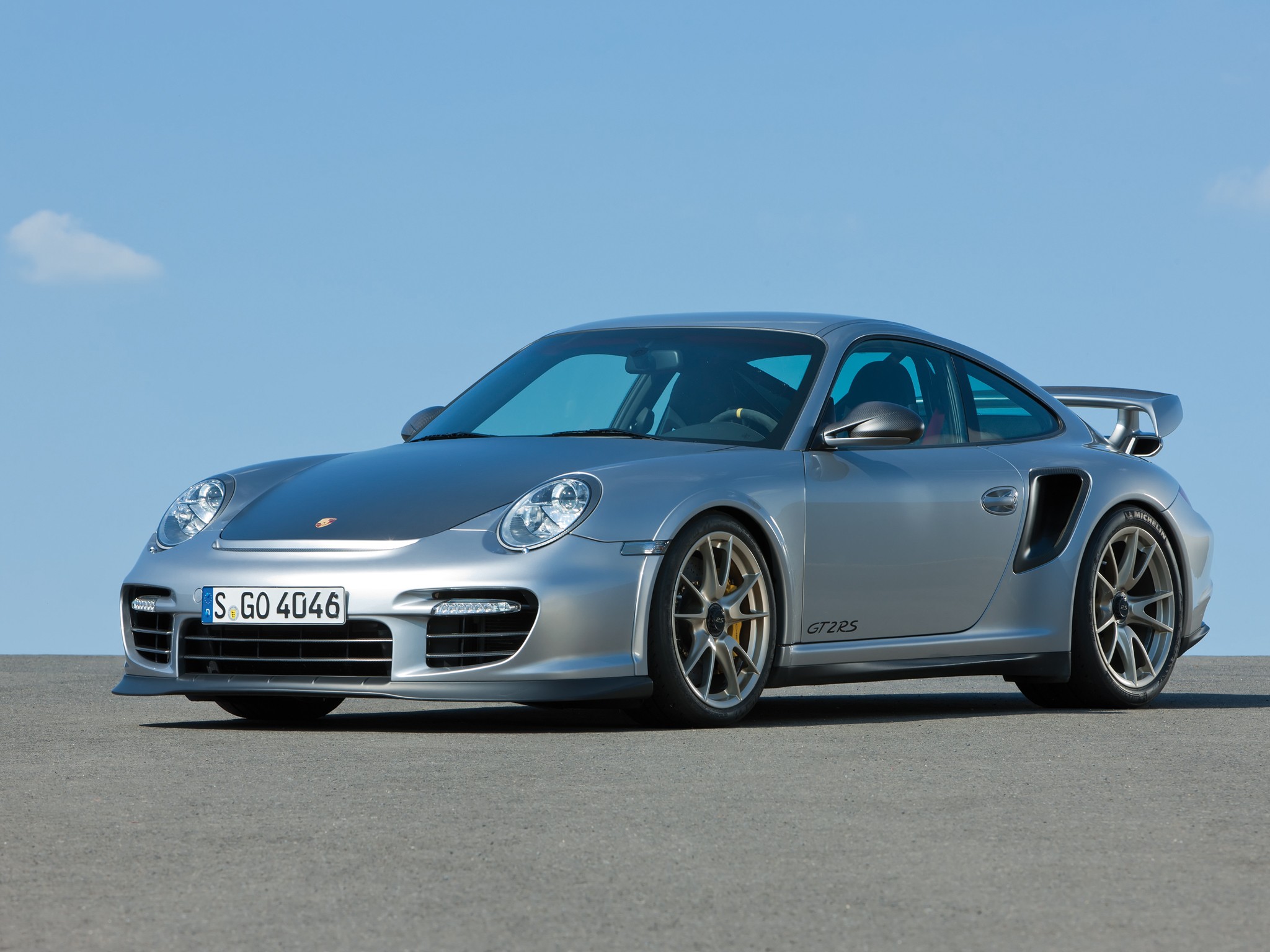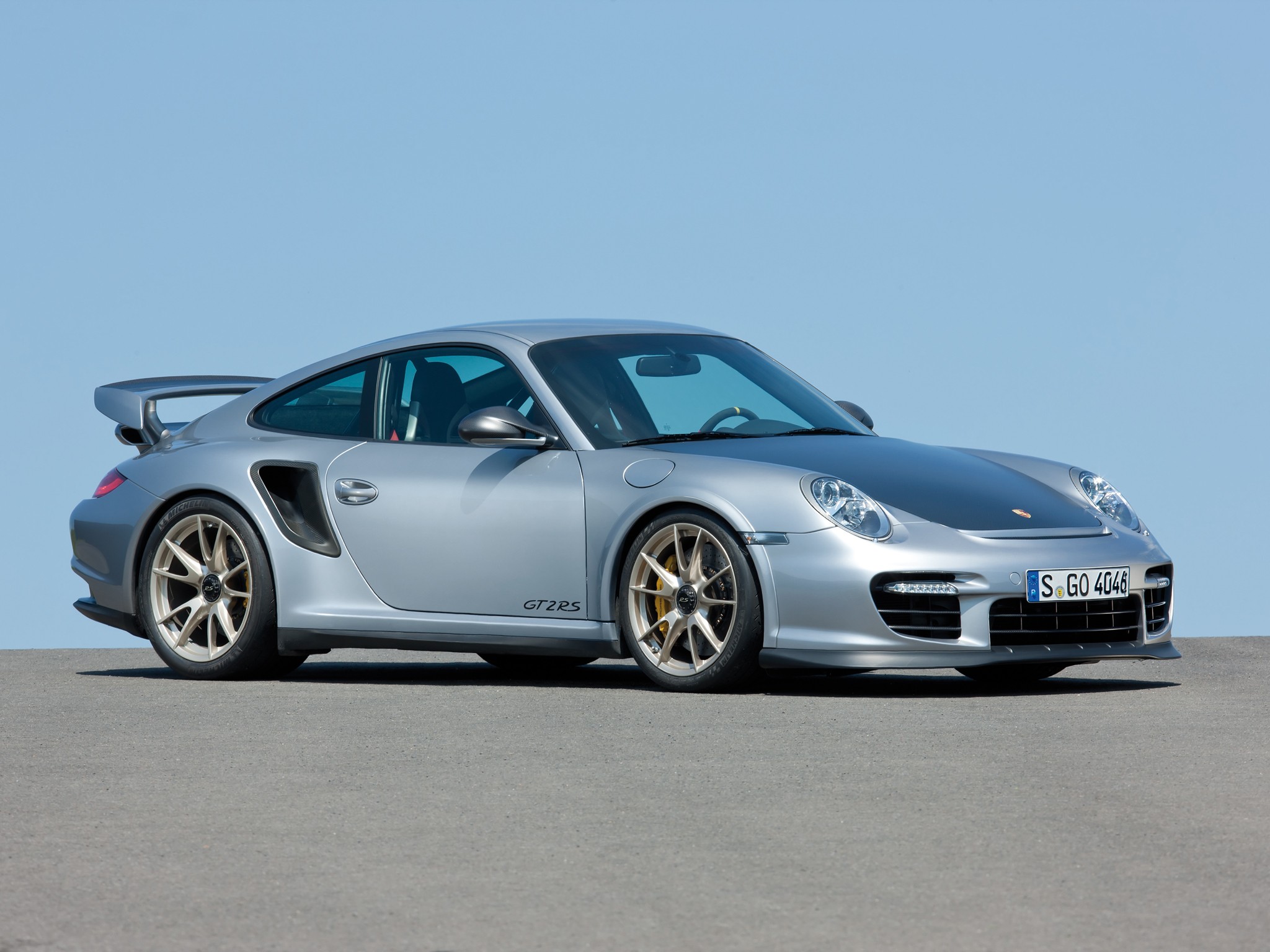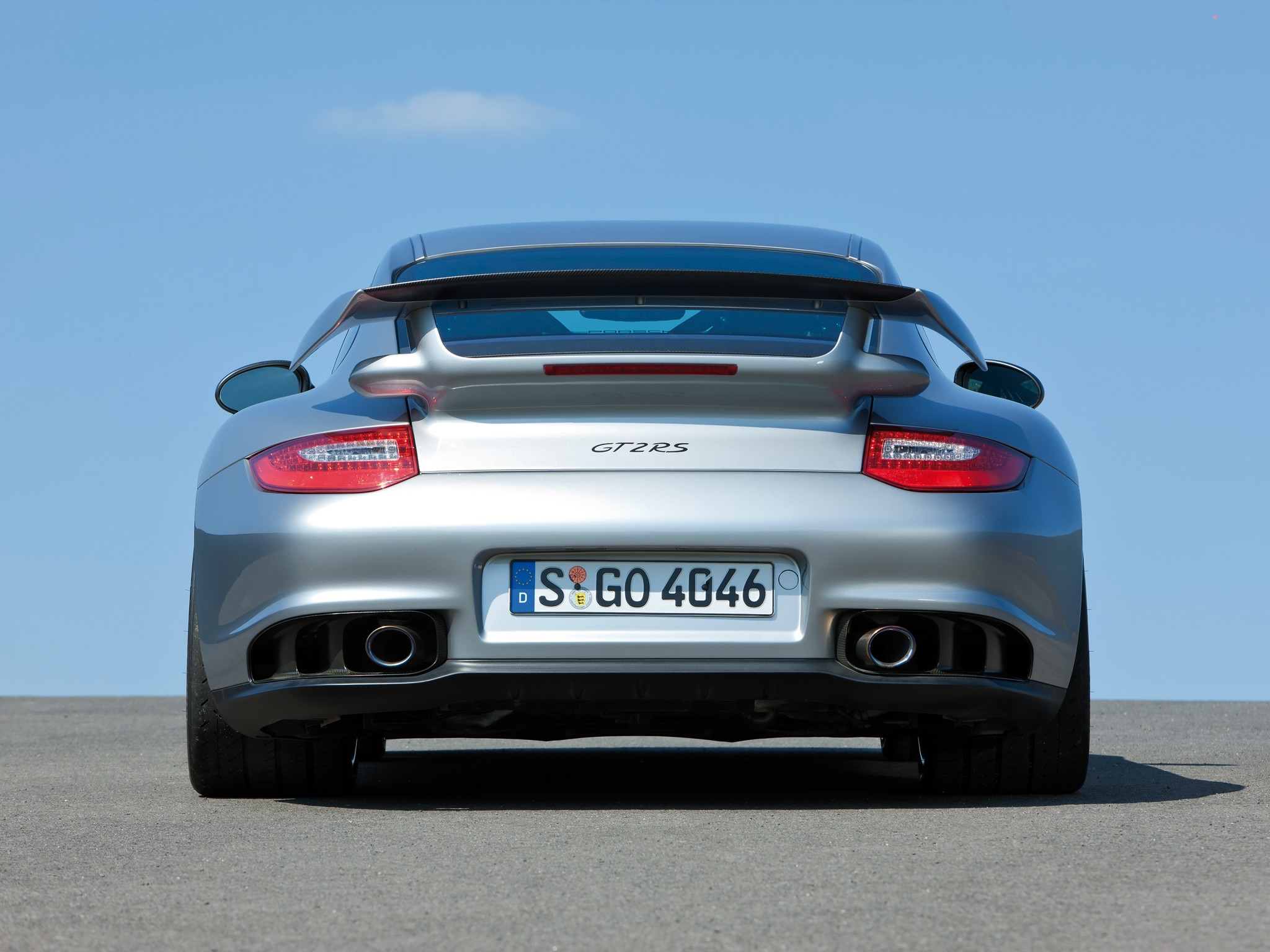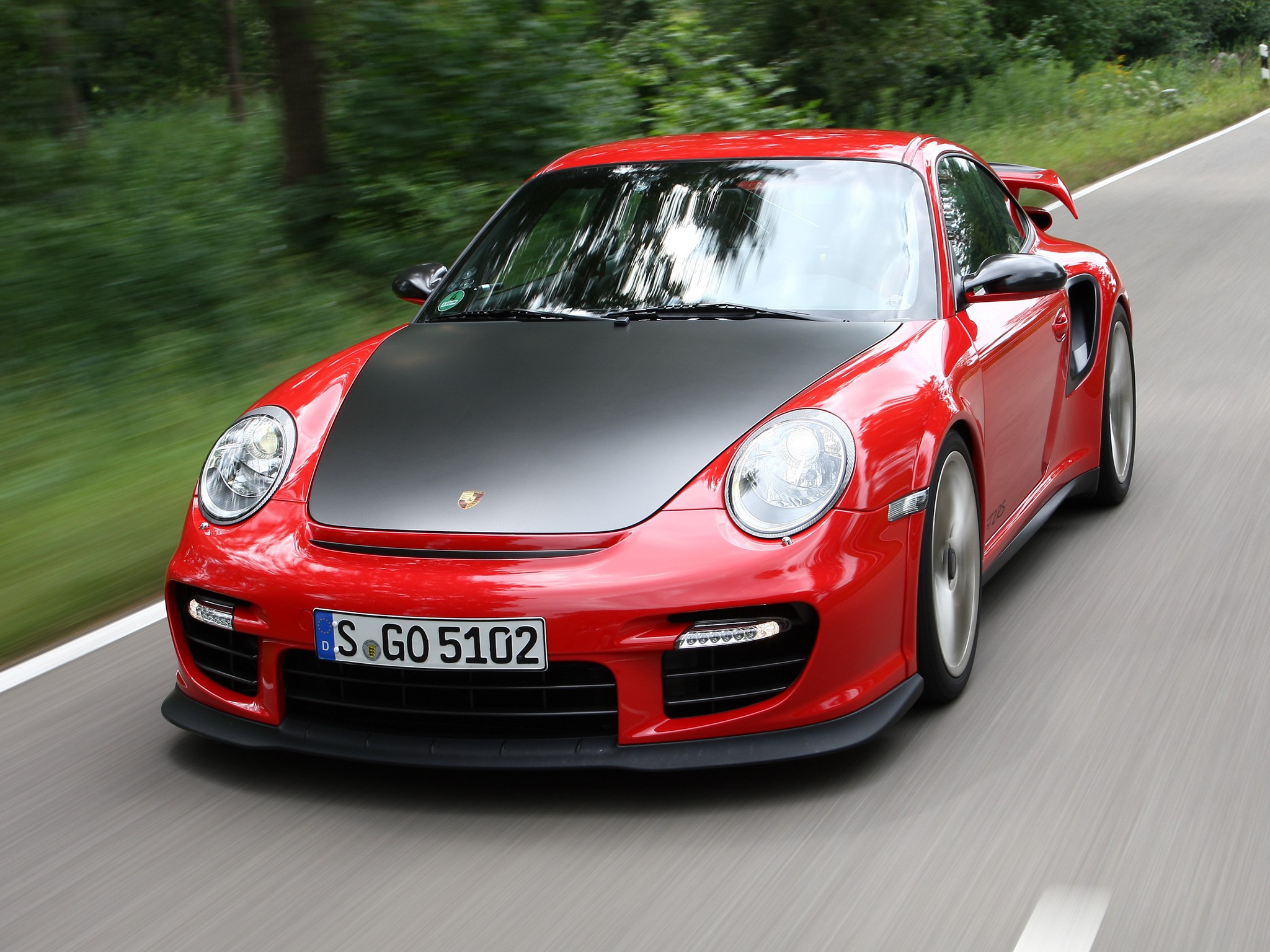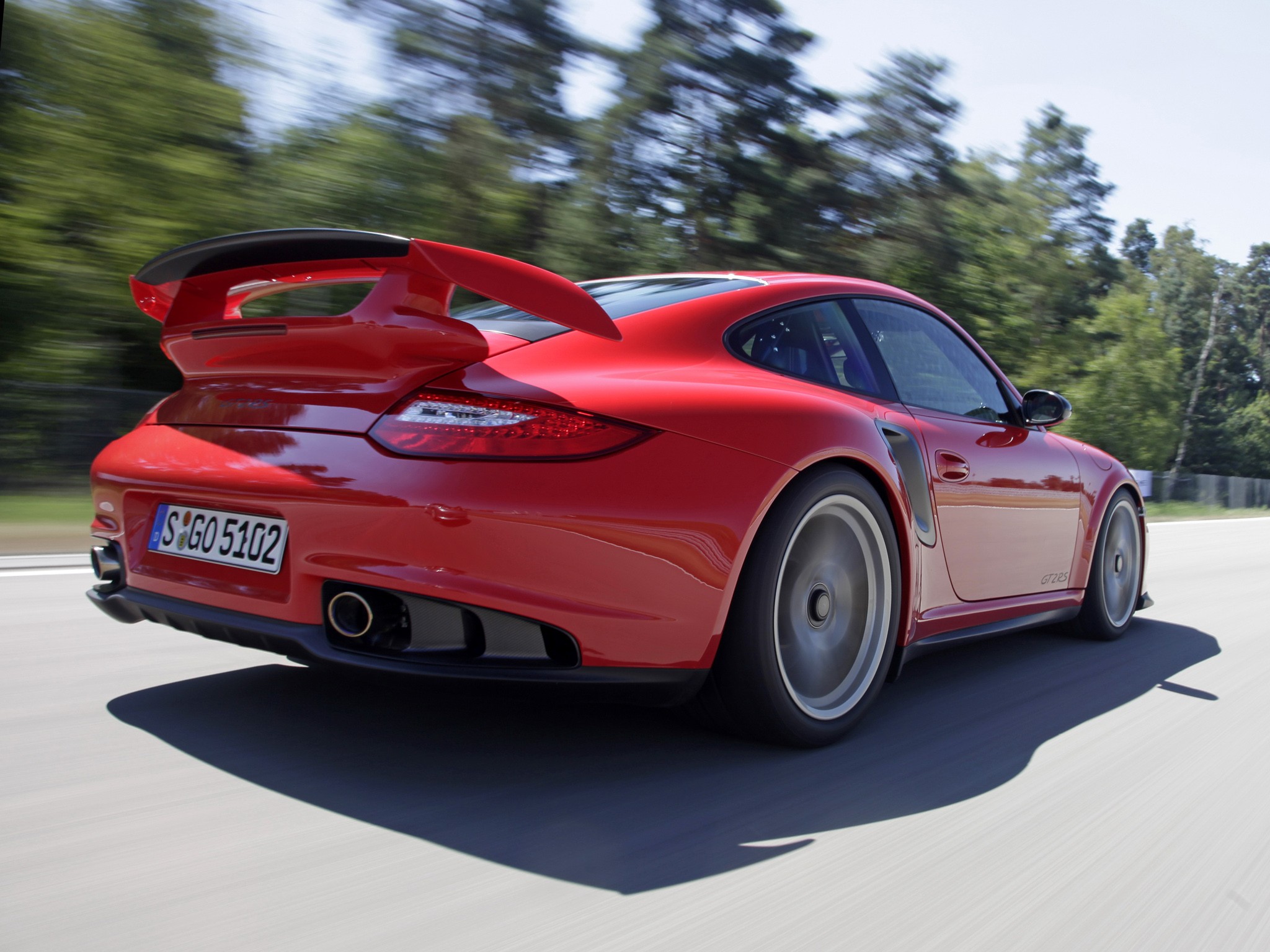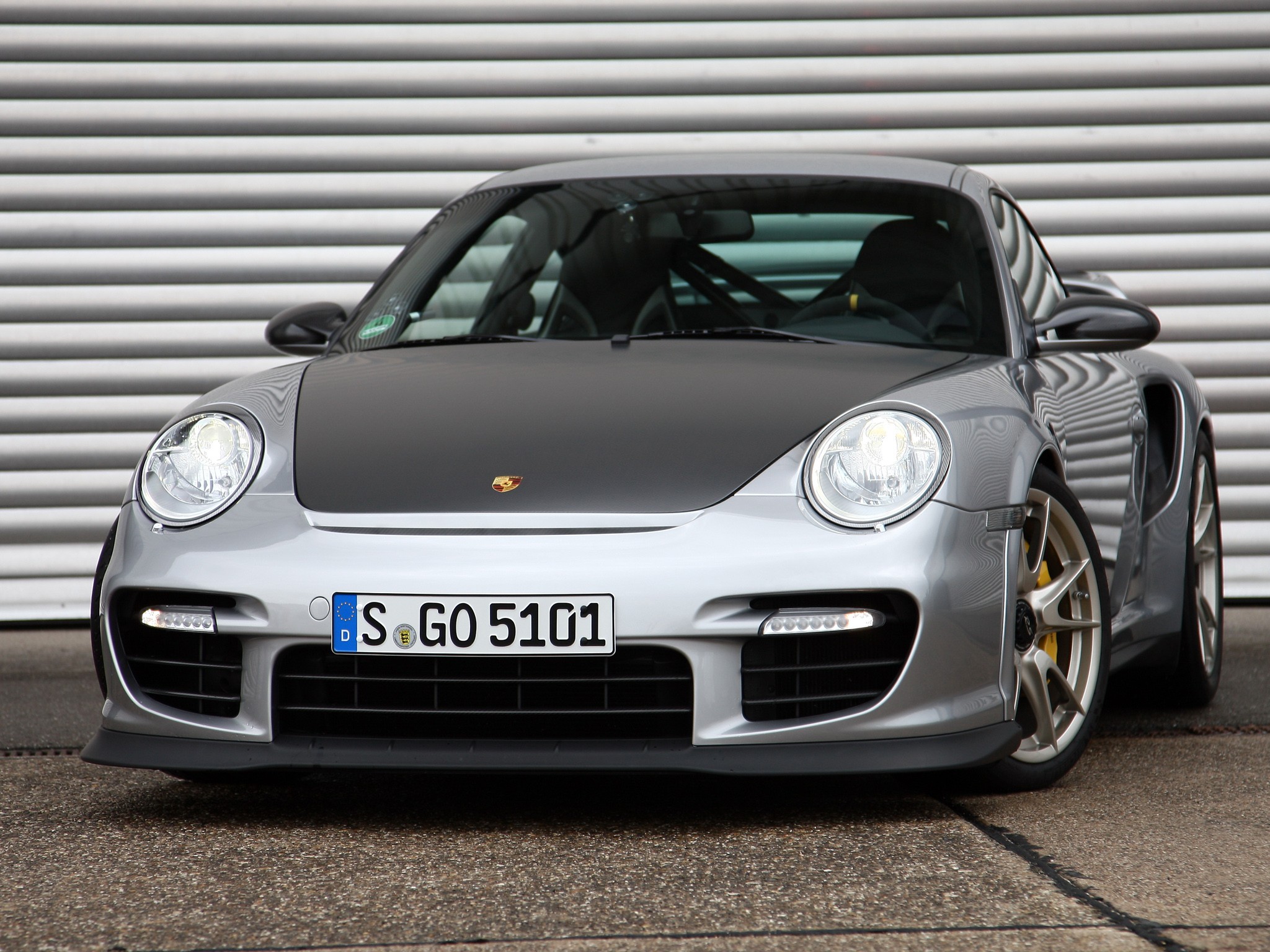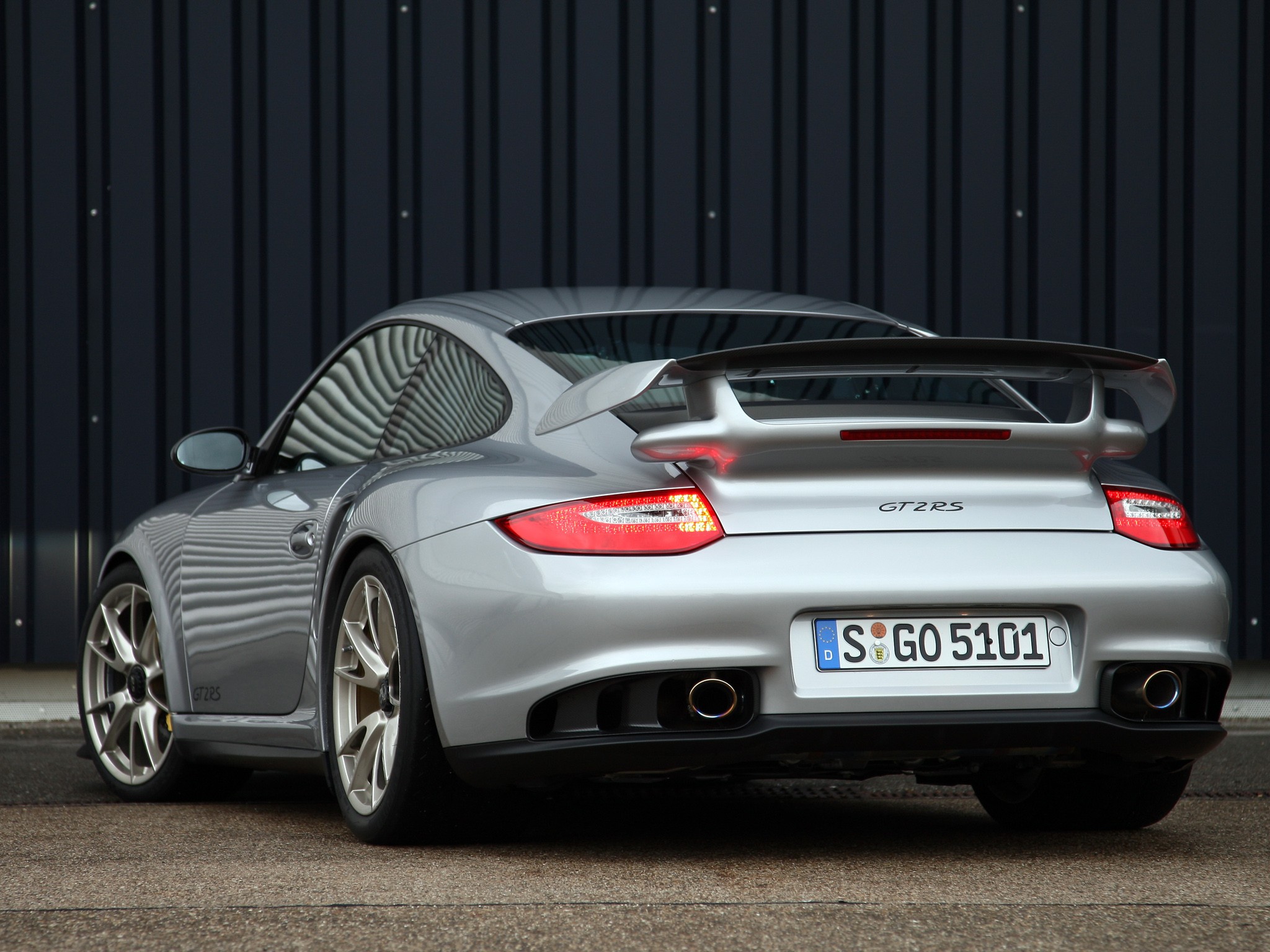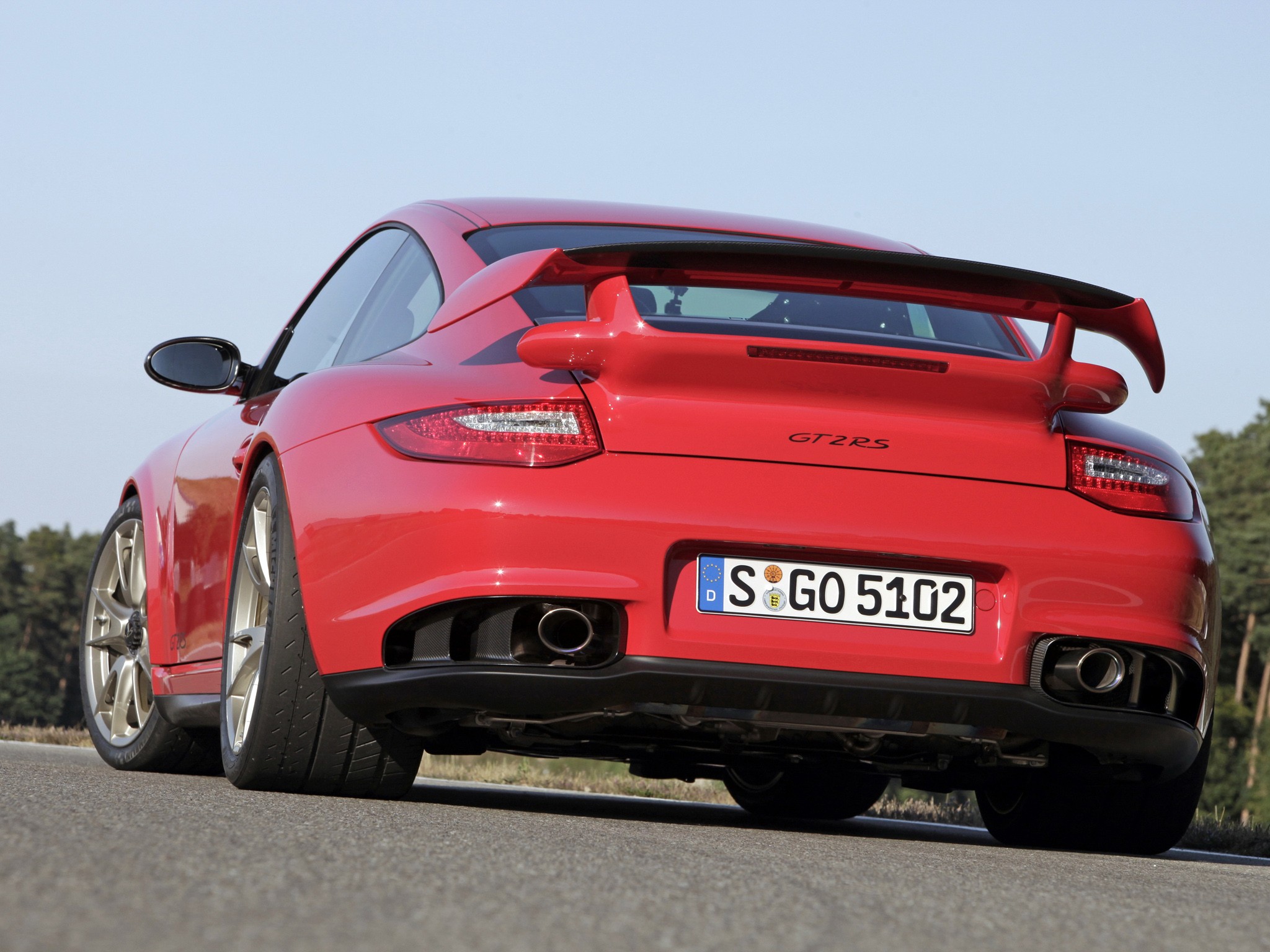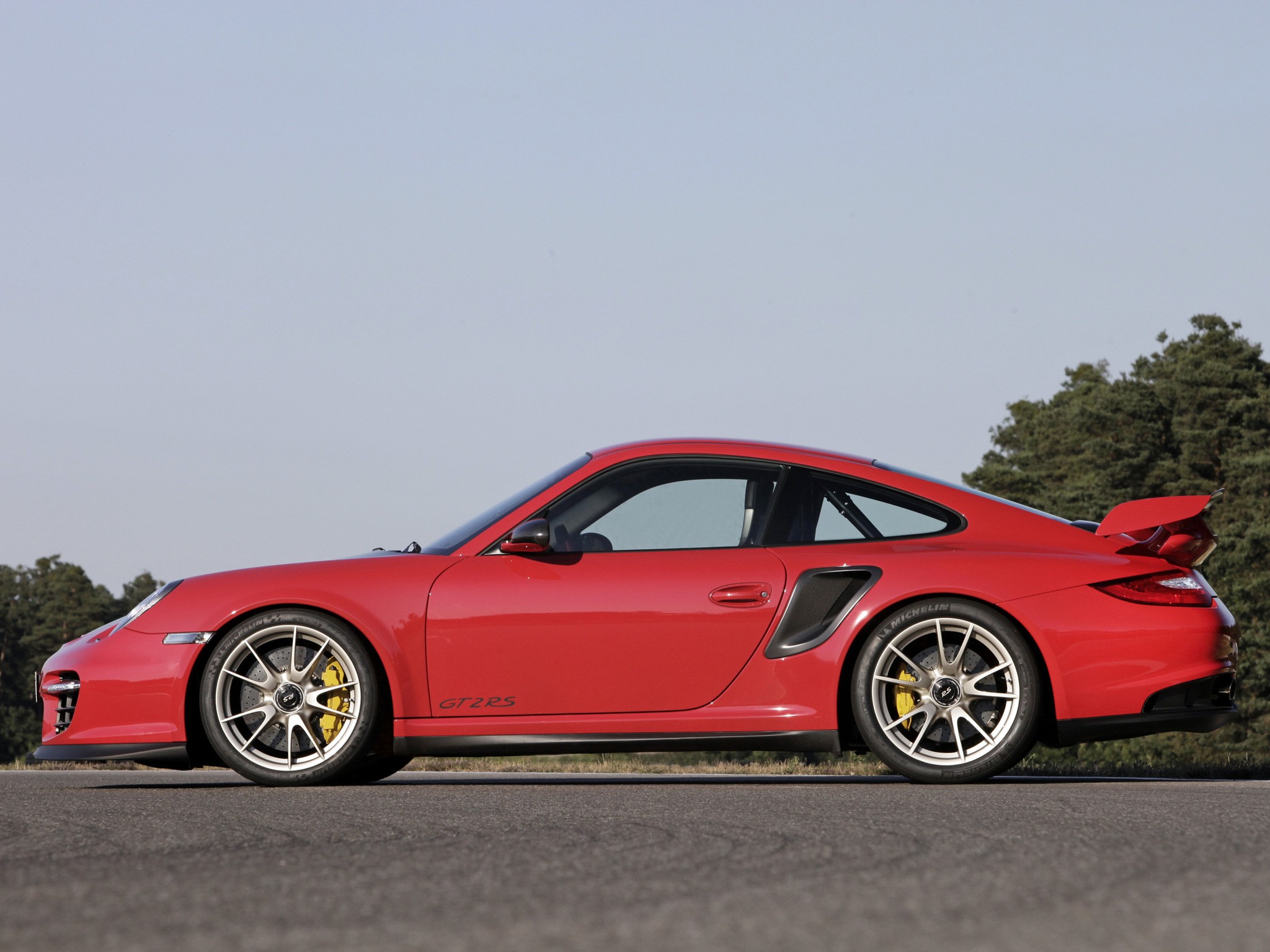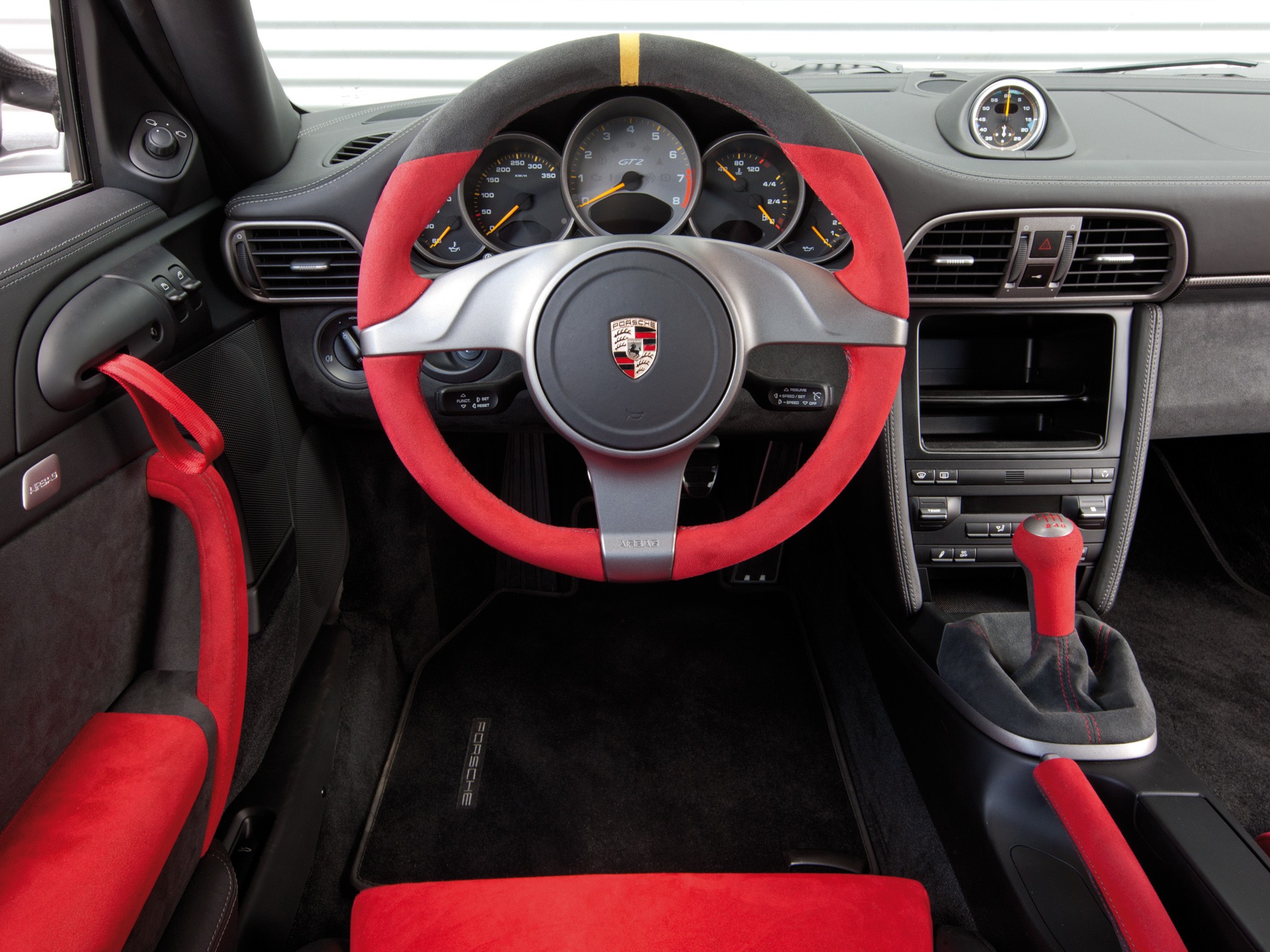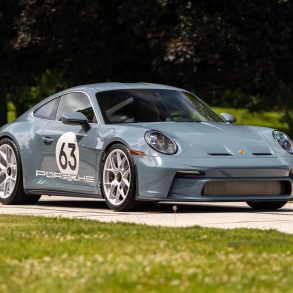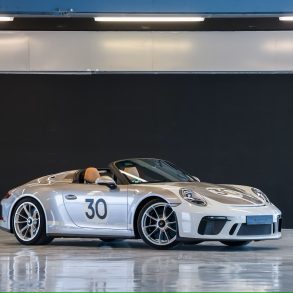(2011) Porsche 911 GT2 RS (997) – Ultimate Guide
The time: seven minutes, 18 seconds on the Nürburgring-Nordschleife. The power: 620 hp. The weight: 1,370 kilograms or 3,021 lb in road trim with all fluids on board. The car: the new Porsche 911 GT2 RS. The GT2 RS is making its world debut at the Moscow Auto Show on August 25th.
The future top GT model marking the absolute climax in the 911 range is the fastest and most powerful road-going sports car ever built in the history of Dr. Ing. h.c. F. Porsche AG, Stuttgart. With power up by 90 hp and weight down by 70 kilograms or 154 lb in comparison with the 911 GT2, the new 911 GT2 RS has a power-to-weight ratio of just 2.21 kilos or 4.9 lb per horsepower, by far the best power/weight ratio in its class.
Obviously, these are the ideal ingredients for an ultra-high-performance sports car with supreme agility, truly blistering performance on the road, and of course exemplary Porsche Intelligent Performance. For despite this extra power and performance, fuel consumption and CO2 emissions versus the 911 GT2 are down by approximately 5 per cent to 11.9 ltr/100 km (equal to 23.7 mpg imp) and 284 g/km.
The 3.6 litre six-cylinder boxer engine boosted by two turbochargers with variable turbine geometry exclusive to Porsche in its combination with a gasoline engine drives the rear wheels via a six-speed manual gearbox. Developed especially for the 911 GT2 RS, sports tyres measuring 325/30 ZR 19 convert this massive power into equally massive performance and acceleration on the road: 0 to 100 km/h in 3.5 seconds, 0 to 200 km/h in just 9.8 seconds, and 0 to 300 km/h in 28.9 seconds. Top speed is 330 km/h.
Equally supreme stopping power on this ultra-high-performance sports car comes from PCCB composite ceramic brakes. Appropriate longitudinal and crosswise dynamics are ensured by the sporting RS set-up of the springs, PASM Porsche Adaptive Suspension Management, anti-roll bars, as well as the engine mounts and PSM Porsche Stability Management.
In its looks the new 911 GT2 RS stands out clearly from the 911 GT2 above all through the lavish use of carbon-fibre-reinforced (CFR) components in matt-black surface finish, even wider wheels and flared wheel arches at the front, new 911 GT2 light-alloy wheels with central locking, as well as ”GT2 RS“ model designations on the doors and rear lid. The upgraded front spoiler lip and the rear spoiler lip made of CFR and now 10 millimetres or almost 0.4 inches higher, again in surface carbon finish, ensure the right aerodynamic precision as well as extra downforce.
The interior also exudes the flair of sporting performance in virtually every detail, featuring lightweight bucket seats made of carbon-fibre-reinforced plastic in carbon surface finish and lightweight door panels with door opening straps. The basic interior colour is black, contrasting attractively with features such as the seat centre sections and the roof lining as well as segments on the steering wheel rim. The gearshift and handbrake lever are both finished in red alcantara.
Limited to just 500 units, the 911 GT2 RS will be available in Europe from September 2010, in the USA from October 2010. The Euro base price is 199,500.- Euro. Including VAT and national specifications/equipment the new 911 GT2 RS will retail in Germany at a price of 237,578 Euro.
Pictures
Press Release
The Porsche 911 GT2 RS is an ultra-high-performance sports car proudly taking over pole position in the line-up of the most powerful and fastest production sports cars in the history of Porsche. An extra 90 horsepower and weight reduced by 70 kg or 154 lb compared with the 911 GT2, give the 911 GT2 RS a power-to-weight ratio of only 2.21 kg (4.88 lb) per horsepower, setting a new benchmark in this class.
As a leading example of Porsche Intelligent Performance, the Porsche 911 GT2 RS is moreover not only faster, but also more fuel-efficient: Despite the car’s extra power, both fuel consumption and CO2 emissions in the NEDC New European Driving Cycle are down by approximately 5 per cent compared with the 911 GT2, with the following exact specifications: 3.6-litre biturbo flat-six power unit delivering 620 hp; rear-wheel drive, six-speed manual gearbox; weight, unladen, to DIN standard 1,370 kg/3,021 lb; acceleration from 0-100 km/h in 3.5 seconds; top speed 330 km/h or 205 mph; fuel consumption in the NEDC cycle 11.9 ltr/100 km (equal to 23.7 mpg imp); CO2 emissions 284 g/km.
Clearly dedicated to motorsport, this new top-of-the-range GT in the 911 line-up sets stan dards on both road and track. On the Nordschleife of Nürburgring the new model outper forms the lap times of the already very fast 911 GT2 by a full 14 seconds, clocking in in just 7:18 minutes. Accelerating all-out, the Porsche 911 GT2 RS reaches the 200-km/h mark (125 mph) in just 9.8 seconds and continues on to the 300-km/h mark in a mere 28.9 seconds.
The Porsche 911 GT2 RS stands out from the very beginning also in its looks as an ultra-high-performance sports car fully dedicated to motorsport. Through its striking design with extralarge air intakes at the front as well as the rear wing so typical of Porsche’s top models, the 911 GT2 RS confirms its supreme potential right from the start, numerous components made of visible matt-black carbon-fibre-reinforced plastic bearing a clear testimony to lightweight construction, while wider wheels and flared wheel arches on the front axle, new 911 GT2 wheels made of light-alloy with central bolts, as well as “911 GT2 RS” model designations on the doors and the rear lid add the final touch to the car’s dynamic looks.
Limited to a production run of just 500 units, the Porsche 911 GT2 RS will be entering the European market in September and the US market in October 2010.
Highly Efficient Power Unit with Thoroughbred Racing Technology
Focusing on the power unit of the 911 GT2 RS, Porsche’s engineers are capitalising to an even greater extent on the great potential of this highly successful and proven motorsport six-cylinder setting the foundation for all engines in the 911 GT2 range. Like the power unit in the 911 GT2, the new top engine comes with displacement of 3.6 litres and receives combustion air from two turbochargers with variable turbine geometry (VTG).
The big advantage of a VTG turbocharger is that both air throughput and the flow of air to the turbine wheel may be varied by small turbine rotors combining the benefits of a small exhaust gas turbocharger with the fortes of a large turbocharger: superior engine power and dynamic response, on the one hand, supreme torque at low engine speeds, on the other. The two water-cooled exhaust gas turbochargers are built for maximum charge pressure of approximately 1.6 bar, twice the charge pressure of the power unit in the 911 Turbo and 0.2 bar more than on the 911 GT2 – an essential factor contributing to the additional power and muscle of the engine.
The second essential factor is the use of optimised radiators to give the charge air an even better cooling effect: A new radiator system and cooling network with larger block depth and enhanced flow conditions increases the efficiency of the intercoolers by approximately 15 per cent, more effective cooling of the air under pressure increasing both air density and oxygen content, so that more fuel can be converted into genuine engine power.
Reaching an impressive output level of 172 hp per litre, the increase in engine power is perfected by the appropriate adjustment of engine management following the same course as the maximum output of the engine and reaching a peak of 700 Newton-metres or 516 lb-ft between 2,250 and 5,500 rpm. Top engine speed, in turn, is 6,750 rpm.
The new six-cylinder has been optimised consistently and without the slightest compromise for both supreme agility and fast-revving performance. As an example, this means consistent use of a single-mass flywheel allowing the engine to rev up more quickly and offer an additional potential for even faster acceleration. Compared with a comparable two-mass flywheel featured, for example, in the 911 GT2, the weight of the single-mass flywheel is down by more than 8 kg or 17.6 lb.
The engine comes with a vertically split crankcase made of pressure-cast light-alloy and featuring a crankshaft running in eight bearings, forged lightweight pistons in Nikasil-coated aluminium cylinder liners, as well as Porsche’s variable VarioCam Plus valve management.
The six-cylinder itself is connected to the body of the car by specially set-up, performanceoriented engine mounts.
Exhaust System made of Titanium
Both the rear mufflers and the tailpipes on the exhaust system of the Porsche 911 GT2 RS are made of titanium, a very special material combining low weight with superior resistance to high temperatures and material loads. Weighing approximately 9 kg or 19.8 lb, the muffler is approximately 50 per cent lighter than a comparable unit made of stainless steel.
Expansion-Type Intake Manifold for Extra Power and Even Lower Fuel Consumption
Like all turbocharged power units in the 911, this new high-performance sports car comes with an expansion-type intake manifold now made for the first time out of a special synthetic material reducing weight versus the intake manifold made of aluminium on the previous 911 GT2 by more than 3 kg or 6.6 lb.
Introduction of the expansion-type intake manifold is indeed a fundamental prerequisite for the high charge pressure offered by the engine of the RS: The charge cycles in the engine generate air oscillation in the intake section between the throttle butterfly and the intake valves. The pulsation effect generated in this way builds up alternating pressure levels.
The intake manifold on an engine today generally uses the compression phase to charge the cylinders, forcing more air into the combustion chambers and thus increasing both cylinder charge and engine output. The disadvantage of this resonance principle is that the charge effect not only compresses the air flowing in, but also builds up a higher temperature, making it impossible to ignite the fuel/air mixture at exactly the right point for optimum power and performance.
The opposite effect is that the under-pressure prevailing in the expansion phase cools down the air in a process appropriately used by the expansion manifold on the Porsche 911 GT2 RS with its long intake pipes and a smaller cross-section. At top engine speeds this intake technology maintains a fuel/air mix temperature approximately 20° C lower immediately before closing the intake valves than on an engine with a conventional intake manifold. This, ultimately, means a significant increase in all-round efficiency, with fuel consumption dropping by approximately 15 per cent under full load on the same engine output.
Dry Sump Lubrication for a Reliable Supply of Oil
As an ultra-high-performance sports car, the Porsche 911 GT2 RS naturally comes with classical dry sump lubrication incorporating a separate engine oil tank. In all, no less than nine oil pumps ensure a reliable flow of lubricant even during the long phases of lateral acceleration typically encountered on the race track. Specifically, these are two oil extraction pumps for the exhaust gas turbochargers, two oil scavenge pumps on each cylinder head, as well as two scavenge pumps and one pressure pump in the crankcase itself.
Manual Gearbox with Adjustable Transmission Ratios
Power is transmitted to the drive wheels of the Porsche 911 GT2 RS by a manual six-speed gearbox developed specifically for racing and featured on all of Porsche’s GT sports cars, keeping gearshift travel very short and precise. A special feature is that the gears are inserted into the transmission shafts instead of being forced on or pressure-fitted and may therefore be replaced as required, giving the driver the option to customise the transmission individually to the specific track conditions in each race.
Taking the toughest motorsport requirements into account, the synchronising rings on gears 2 – 6 are made of steel instead of a non-ferrous metal and again allow a very fast and precise gearshift.
Locking Differential with Asymmetric Effect
The Porsche 911 GT2 RS comes as standard with an asymmetric locking differential serving as a compensation or balance transmission for the gearbox. Through its set-up and the configuration of asymmetric locking ratios – 28 per cent under traction and 40 per cent in overrun – the locking differential carefully considers both the specific driving features and qualities of the GT2 RS and the car’s technical and engineering highlights, delivering maxi mum traction and driving stability combined with supreme agility in bends.
Extra-Light Chassis with Racing Qualities
The Porsche 911 GT2 RS is a genuine sports car designed for supreme driving dynamics right from the start, with features and an overall set-up focusing particularly on performance. In its fundamental layout, the chassis and suspension is the same as on the 911 GT2, meaning that Porsche’s new top-performance sports car comes as standard with PASM Porsche Active Suspension Management, a sports-tuned version of PSM Porsche Stability Manage ment switching off completely in two steps whenever required, as well as PCCB Porsche Ceramic Composite Brakes for supreme stopping power and anti-fading resistance.
To enhance the car’s roll stability, the Porsche 911 GT2 RS comes not only with a wider rear axle, but also with a wider axle at the front. The advantages are even more agile steering behaviour when entering a bend and even higher speeds throughout the entire bend as a whole and when returning to a straight line.
Compared with the 911 GT2, front wheel track is up by 12 millimetres or 0.47″, ensured by reducing press-in depth in the wheel humps from 53 millimetres/2.09″ to 47 millimetres/1.85″.
To offer an even higher level of performance, the Porsche 911 GT2 RS rests on a particularly light and sporting, precise suspension. As an example, the diagonal suspension bars on the rear axle are made of aluminium, making them approximately 1.4 kg or 3.1 lb lighter than the bars on the GT2.
A further reduction of weight by approximately 3 kg or 6.6 lb is provided by new springs on the front axle and helper springs on the rear axle. Fitted in the lower section of the spring element, the helper springs provide the option to keep the main springs shorter and lighter, at the same time precisely preserving the pre-tension of the main springs when the wheels reach the end of their outbound stroke. This set-up is particularly popular in motorsport and is to be found on all 911 GT racing cars such as the 911 GT3 RSR and the 911 GT3 Cup.
The lower wishbones, track control arms and the connections of the tiebars to the body of the car and the spring struts on the wheel mounts come with ball bearings offering an even higher level of precision than the usual elastokinematic mounts.
Like all versions of the 911 GT, the 911 GT2 RS allows individual adjustment not only of wheel track both front and rear, but also of the anti-roll bars as well as the spring system including the height of the car to ensure exactly the right handling characteristics on each race track.
Wheels and Tyres for Outstanding Performance on the Track
The Porsche 911 GT2 RS comes on specially developed wheels with a central bolt and tyres with supreme lateral grip for even better performance on the track. Wheel dimensions at the front are 9″ on 245/35 ZR 19 sports tyres. On the rear axle 12″-wide wheels running on 325/30 ZR 19 tyres ensure optimum traction and a supreme potential in handling lateral forces.
The Tyre Pressure Control System (TPC) has been updated once again for the Porsche 911 GT2 RS. Compared with the system featured so far as standard worldwide on the 911 GT2, TPC on the new 911 GT2 RS, like the latest generation of Tyre Pressure Control on the 911, comes with a central aerial and upgraded wheel electronics providing even faster measurement of tyre pressure after switching on the ignition and consistently updating the pressure reading while the system is being filled.
Ceramic Brakes with Even Lighter Brake Discs Featured as Standard
The extra-light, high-performance PCCB Porsche Ceramic Composite Brakes on the Porsche 911 GT2 RS boast six-piston aluminium fixed callipers at the front and four-piston aluminium fixed callipers at the rear. To reduce weight to an absolute minimum, the brake covers on all four composite brake discs are likewise made of aluminium, this alone cutting the weight of the unsprung masses versus PCCB with brake covers made of stainless steel by 4.8 kg or 10.6 lb.
To further improve the brake potential under particularly heavy loads, the Porsche 911 GT2 RS features highly effective brake ventilation on the front axle and an additional brake vent on the rear axle. As on the current 911 GT3 models, the air vents guide an additional supply of air through brake air ducts along the underfloor, feeding cool air specifically as required to the rear brakes.
PASM Damper System with the Ideal Setting for the Nürburgring Race Track
Both the kinematic configuration and the suspension settings on the front and rear axle have been modified, reflecting the clear orientation of the Porsche 911 GT2 RS to motorsport. As a result, the “Normal” PASM setting precisely follows the profile of the Nordschleife of Nürburgring, while the “Sport” setting reflects the racing conditions typically encountered on a modern race track with largely flat and smooth surfaces.
Porsche Stability Management Switching on and off in Two Stages
The Porsche Stability Management car stabilisation system comes as standard also on all GT versions of the Porsche 911, in this case with a strong focus on motorsport. Geared specifically to the 911 GT2 RS, the system meets the demands of even the most sporting driver by deactivating individual functions and components as required. As an example, all the driver has to do is press a button to deactivate Stability Control (SC) lateral dynamic management, while Traction Control (TC) longitudinal dynamic management remains active. Then, pressing the button a second time, the driver also deactivates TC.
Once deactivated, these functions are not automatically reactivated even under extreme conditions. Rather, the driver is required to actively press the button in order to bring back the systems and their individual functions.
High-Tech Lightweight Engineering with Strong Downforce
In its sporting looks, the Porsche 911 GT2 RS expresses two features in particular: aerodyna mics and lightweight construction. Careful and consistent improvement of the car’s aerodynamic qualities ensures approximately 60 per cent more downforce overall than on the “regular” 911 GT2, ensuring stable behaviour of the car even at very high speeds on road and track.
This lightweight construction comes out clearly at very first sight by the completion of many body components in carbon, contributing significantly to the reduction of weight by 70 kg or 154 lb to 1,370 kg (3,021 lb) on a full tank and with all operating fluids in the car.
Extra-large air intakes and outlets are characteristic of the GT2 models. A further outstan ding feature is the additional air outlet upfront of the bootlid, diverting waste air upwards out of the centre radiator. This not only improves the flow of air through the radiator, but also enhances aerodynamic downforces on the front axle.
As a characteristic sign of distinction versus the 911 GT2, the extra-large bootlid is made completely of visible carbon clearly expressing not only the sporting looks of the car, but also a reduction of weight by approximately 2.5 kg or 5.5 lb versus the already very light aluminium bootlid on the 911 GT2.
Yet a further point is that the slats on the air intake and the air outlet in front of the bootlid are made of carbon fibre-reinforced plastic again in the interest of very low weight and very dynamic looks.
Another new highlight is the unique lip around the front spoiler of the 911 GT2 RS wider than on the 911 GT2 and with stronger, shovel-like contours along the sides for even more aerodynamic downforce at the front.
Wider wheel arches on the front axle are likewise new on the Porsche 911 GT2 RS, smoothly covering the wheels and tyres wider and positioned further to the outside than on the “regular” 911 GT2. These flared wheel arches made of a special plastic material increase body width at the front by 26 millimetres or 1.02″ and are finished in body colour.
Rear Wing with High Spoiler Lip and Ram Pressure Air Collector
One of the most striking features of the Porsche 911 GT2 RS is the rear wing of he car. Through its dimensions and contours alone, the rear wing has a significant influence on the aerodynamic downforces acting on the rear axle. Particularly outstanding highlights are the large sideplates at each end of the rear wing as well as openings integrated in the sideplates serving to collect air with their ram effect and thus improving the supply of combustion air to the engine.
The spoiler lip integrated in the wing profile is another new feature in its shape and surface configuration, with the rear edge on the spoiler lip 10 mm or 0.39″ higher than on the “regular” 911 GT2. This again provides better aerodynamics with a clearly defined flow of air and, as a result, additional downforce on the rear axle. The spoiler lip itself, finally, is made of carbon fibre-reinforced plastic.
The centre section at the rear as well as the lower rear panels around the tailpipes and the outlet openings on the intercooler in new gill design are likewise made of visible carbon on the 911 GT2 RS. The rear design of the car is rounded off by the rear lights of the current 911 models in LED technology: Unlike the rear lights on the 911 GT2, the new rear lights on the 911 GT2 RS thus taper out sharply to the outside and are integrated elegantly into the rear end of the car, the LED look additionally emphasising the sheer width of the Porsche 911 GT2 RS and providing truly dynamic daytime and, in particular, night design.
The weight of the car is reduced and both agility and driving performance are enhanced on the Porsche 911 GT2 RS by the rear screen and the rear side windows made of polycarbonate (with the exception of US models featuring glass on the rear side windows and the rear screen). Compared with the glass windows on the 911 GT2, this reduces the weight of the car by a total of approximately 4 kg or 8.8 lb.
Optional: Front Wheel Arches made of Carbon for a Further Reduction of Weight
As an option, lightweight construction can be raised to an even higher level of perfection on the Porsche 911 GT2 RS. One example is that the driver has the choice for the first time of front wheel arches finished in body colour and reinforced by carbon fibre, reducing the overall weight of the car again by approximately 5 kg or 11 lb.
A further option to reduce weight is the choice of a lithium-ion battery more than 10 kg or 22 lb lighter. Through their lower weight, lightweight headlights in halogen technology available as an alternative once again reduce the overall mass of the vehicle.
Two-Seater with a Sporting but Sophisticated Ambience
The interior of the Porsche 911 GT2 RS is also dominated by sporting features, with its leatherclad lightweight bucket seats made of carbon fibre-reinforced plastic (with the exception of US models featuring sports bucket seats with a folding backrest) and lightweight door panels carried over from the Carrera GT with their red opening loops.
The main interior colour is black, with features such as the seat centre sections and roof lining as well as segments on the steering wheel rim and the gearshift/handbrake lever finished in distinctive red alcantara.
As an option at no extra cost the 911 GT2 RS is also available with black leather upholstery featuring alcantara either in red or black. And last but not least, this ultra-high-performance sports car is of course a genuine two-seater.
Lightweight construction in the Porsche 911 GT2 RS goes to the very last detail, with the door entry panels and the visible surfaces on the dashboard trim finished in carbon. A further reduction of weight is ensured by dropping the usual padding beneath the carpets at the rear of the passenger compartment over large areas.
The door entry trim, the deco trim above the glove compartment cover and the carpet at the rear, finally, come with a distinctive “RS” model designation, while the cover on the glass compartment proudly bears a model placard for each model in this limited edition as well as the chassis number of the car.
Clubsport Package Featured as Standard (with the exception of US models)
A Clubsport Package comes as standard on the Porsche 911 GT2 RS (with the exception of models destined for the US market), comprising the rollcage bolted on at the rear, an installation kit for the main battery switch, a six-point seat belt on the driver’s side placed within the car for subsequent use and a fire extinguisher complete with an independent holder likewise placed in position for being fitted later.
Introducing the 911 GT2 RS, Porsche is also offering a wide range of customisation features. These include sports bucket seats with a folding backrest (standard on US models) as well as adaptive sports seats, in each case with seat-integrated thorax airbags.
Further options are leather, alcantara and carbon trim, rear lights in clear glass look, a sixpoint seat belt also on the passenger’s side and the latest generation of PCM Porsche Communication Management including a navigation module and a touchscreen.
As a final option, the GT2 RS is also available without air conditioning, the Clubsport Package featured as standard, as well as the CDR-30 audio system.


